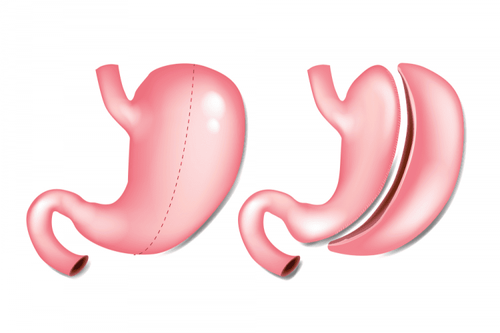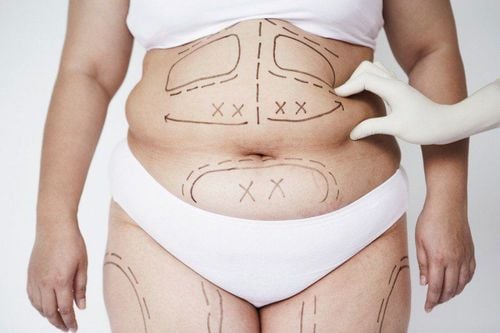This is an automatically translated article.
Obesity is the cause of many health problems. Surgery is an effective method to help lose weight quickly, eliminate and significantly improve health problems for obese patients.1. Methods to treat obesity
Change in diet and exercise: This is a useful and healthy weight loss method, but requires the patient to have persistence. In case it is not possible to exercise on their own, the patient can seek the help and supervision of a treating doctor, nutritionist, psychologist or personal trainer. Taking prescription medications: People at risk of obesity or with a BMI of 27 or higher will be prescribed one of a number of weight loss drugs such as appetite suppressants, lipase inhibitors (reducing the ability to reduce blood sugar). fat absorption). Bariatric surgery: People who have a BMI of 35 or higher and have not been successful with conventional weight loss methods may need surgery to treat obesity. More than just weight loss, surgery can have a significant impact on health problems.2. When should bariatric surgery be performed?
Surgery is an effective method to help eliminate and significantly improve the health and psychological problems of obese people. However, the first thing that patients need to realize is that surgery is not an option for all patients with obesity. Even if the patient has met all the necessary conditions to perform surgery, this should still be the last resort.Generally, a patient is eligible for surgery when the following minimum requirements are met:
BMI is 40 or higher, or 30 to 39.9 and has serious medical conditions comorbidities such as diabetes, high blood pressure, sleep apnea, high cholesterol, joint problems, etc. Overweight by at least 36 kg (80 pounds). Be between the ages of 18 and 75. There has been a history of failed weight loss. Patients clearly understand that surgery is only one part of the whole process of obesity treatment. In addition to surgical treatment, patients need to participate in medical treatment, psychological treatment, and importantly, implement and maintain a scientific diet, living habits, and exercise in moderation. long-term effectiveness.

Phẫu thuật chỉ là một phần trong cả quá trình điều trị, cần duy trì chế độ luyện tập để đạt hiệu quả lâu dài
3. Common types of obesity surgery
There are 4 common types of obesity surgery today in the world with the aim of reducing the amount of food put into the stomach or reducing the absorption of food into the body, including:Gastric Sleeve ): The doctor will remove about 80% of the stomach and create a tubular stomach. After the procedure, the patient will feel less hungry and fuller faster after eating. Gastric Bypass: The doctor will create a smaller stomach bag and connect it to the small intestine to help the patient feel fuller faster and reduce the absorption of minerals. Lap Band: The doctor ties a belt around the upper part of the stomach, forming a small pocket above the belt, so that the stomach will be filled faster when eating, making the patient feel fast. fuller. Duodenal Switch: In this method, a large part of the stomach volume will be removed (such as tubular gastrectomy), intestinal conversion, and cholecystectomy. The results are similar to the above methods: the patient will feel less hungry, feel full faster and absorb less calories and minerals. Each of the above methods has its own advantages and disadvantages. In particular, the surgical method to create a tubular stomach, gastric bypass and pancreatic bile flow bring the effect of weight loss and better health improvement. But these methods require longer hospital stays, recovery, and require the patient to follow a stricter diet after surgery.
The gastric band ligation method is as effective for weight loss as the above methods, but the long-term success rate is lower and requires more monitoring by the doctor.
These are the 4 methods that are being applied the most at major obesity treatment centers around the world. In particular, the method of creating a tubular stomach is used the most because it has good effect on obesity treatment, especially effective in treating sugar metabolism disorders in patients with diabetes.

Cắt tạo hình dạ dày hình ống trong điều trị béo phì
4. Advantages of obesity surgery
Patients undergoing bariatric surgery can be discharged the same day or only need to stay in the hospital for up to 3 days and can return to work in 3 days to 3 weeks.After surgery, the amount of weight loss depends on the surgical method used and the level of compliance with instructions from the doctor. For example, depending on height, weight, and surgery, many patients can lose 45 kg (100 pounds) or more in just 12 to 18 months.
Bariatric surgery can improve the quality of life in 95% of patients and reduce the risk of death by 89% in the first 5 years.
Surgery is the best treatment for obese patients with comorbidities. Specifically: after surgery, patients can reduce the risk of cardiovascular disease by 82%, gastroesophageal reflux can be resolved in 72-98% of patients, the rate of migraine patients is 57%, patients with depression 55%, pseudotumor of brain 96% of patients, dyspnea at sleep 74 - 98% of patients, dyslipidemia - high cholesterol 63% of patients, asthma 82% of patients, high blood pressure 52-92% of patients, metabolic syndrome 80% of patients, urinary incontinence 44-88% of patients, type II diabetes 83% of patients, osteoarthritis 41-76% of patients patients, venous stasis disease 95% of patients, gout 72% of patients...
5. Some special requirements for each type of surgery
Tubular gastrectomy: Patients will be advised not to overeat because there is a risk of stretching the remaining small stomach, leading to weight gain again. After surgery, patients should not eat too quickly because they will have difficulty swallowing. Gastric bypass: it is often impossible to eat sugar because of unpleasant digestive problems. Gastric banding: Patients will have difficulty swallowing if they eat too quickly; Do not eat or drink anything else for 30 minutes after eating. Pancreatic cholangiopancreatography: In addition to the same requirements as for tubular gastric bypass surgery, patients who need to undergo biliary-pancreatic diversion require a stricter vitamin regimen to prevent prevent malnutrition.Please dial HOTLINE for more information or register for an appointment HERE. Download MyVinmec app to make appointments faster and to manage your bookings easily.













